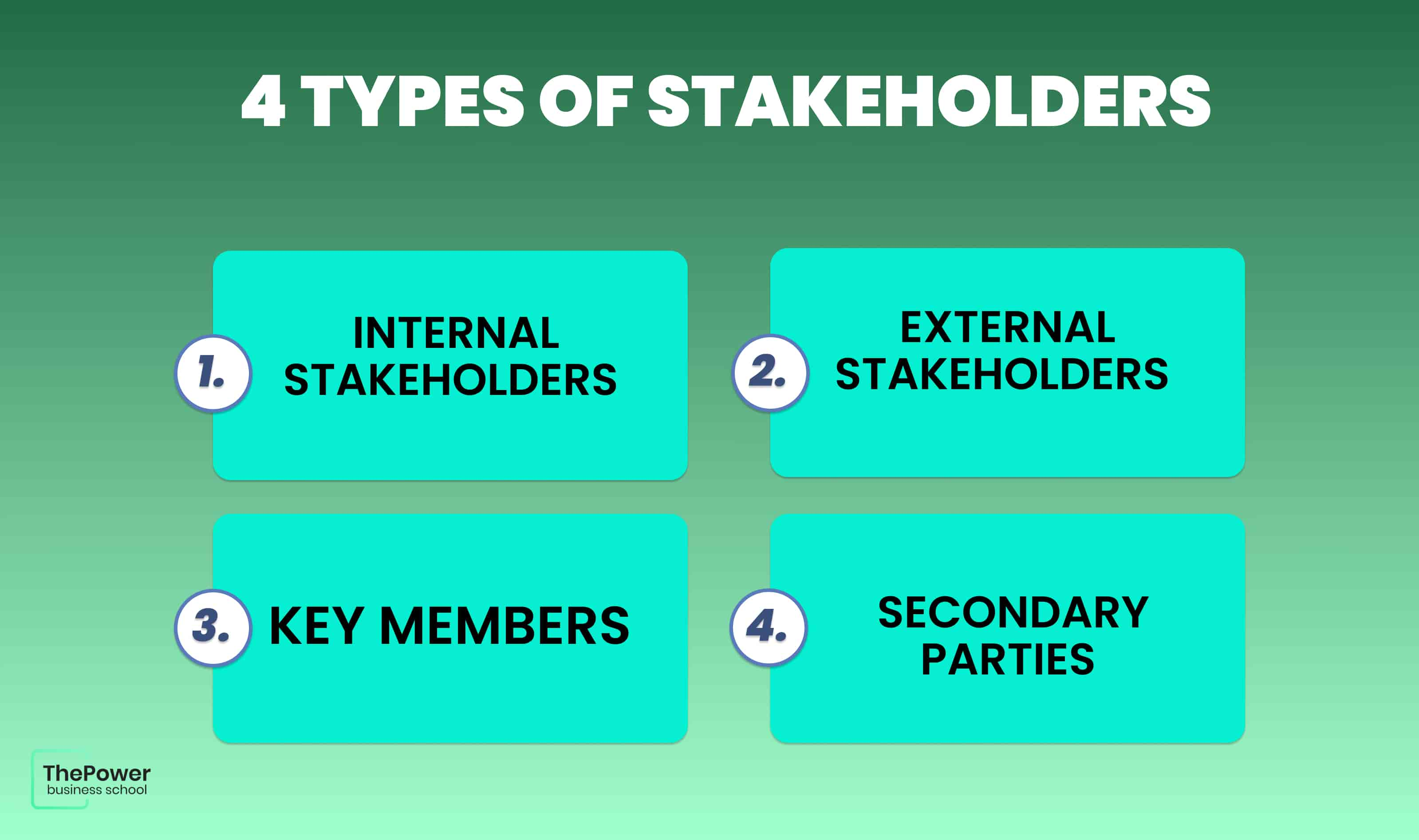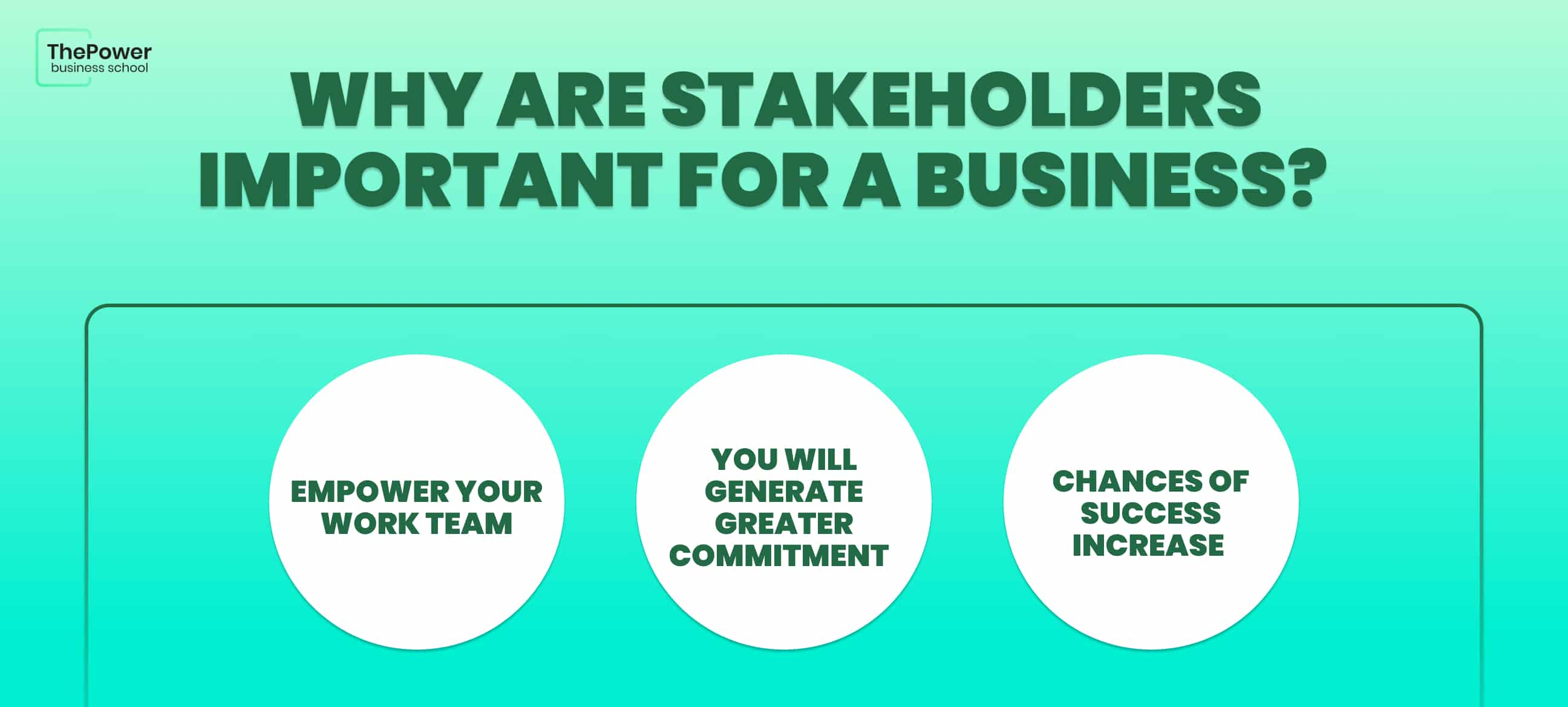Stakeholders: Definition, Types and Role in 2025
No company operates in isolation. Every business decision affects and is influenced by different people and groups: employees, customers, partners, regulators, and even society at large. These are your stakeholders—and managing them well in 2025 is more critical than ever.
If you are an entrepreneur, businessman or have any kind of business, you will be interested in having partners who are aligned with the goals you have set.
A company should be composed of multiple parties working towards the company's results, so each member has an important role to play.
Want to know how you could manage all stakeholders in the same organization? Let's take a look at it below.
What are stakeholders?
We also found it a somewhat strange concept to process at first, we had talked about interest groups or parties with interests but not a stakeholder.
So what are stakeholders? We could define this as a person or organization that can participate and be affected or not in the changes that arise within a company.
This is how a stakeholder of a company, organization or business has the ability to interfere or participate in everything related to the business, such as customers, suppliers, construction or definition of services, competitors, legal departments and even public bodies.
An example of stakeholders could be the following: when a client asks for results of a project and at the moment the business figure does not have the resources to send it and detail it, the stakeholders could intercede to make the creation and presentation of the reports of the results.
In other words, they don't act directly as owners of a company, but they do have the legal authority to take actions that benefit the company's economic results.
4 Types of stakeholders
As we mentioned a few minutes ago, stakeholders can range from two to thousands of members, which is why they have been classified according to their roles. Let's see what these are:
1. Internal stakeholders
They are stakeholders who have a direct relationship with the company, so they are the first people you should take into account when making any change, no matter how small it may be for you.
Who are the internal stakeholders? Partners, shareholders, employees and collaborators who have a daily interaction within the company.
2. External stakeholders
This group of people is not directly within the work group or facilities of the company but they still have a fundamental role in the growth of the organization.
Here you will take into account suppliers and strategic alliances that are linked to other organizations. They are groups that provide raw materials for the manufacture of products, services contracted to third parties and all those that benefit the production of the organization.
3. Key members
They are an indispensable part of the puzzle that makes up your company. Key members work directly in the daily actions of the company and in how to monetarily attribute to its growth.
What people make up the key members of your company? The customers and shareholders who contribute financially to the company to ensure its economic expansion.
So it's key that you know how to satisfy both stakeholders if you want to keep profitability stable.
4. Secondary parties
They have certain importance within the organization but their daily presence within the company is not indispensable. Here you can take into account profiles such as lawyers, accountants, accounting advisors, economists, administrators and other related profiles.

The Power–Interest Matrix
One of the most practical tools to understand and manage stakeholders is the Power–Interest Matrix. This framework helps you map stakeholders based on two dimensions:
Power → how much influence they have over your business or project.
Interest → how much they care about or are affected by your decisions.
By plotting stakeholders in this matrix, you can decide the right engagement strategy for each group:
High Power, High Interest (Manage Closely)
These are your key players: investors, senior executives, regulators.
They can directly impact the success of your business, so involve them in decision-making and keep them informed at all times.
High Power, Low Interest (Keep Satisfied)
Example: government agencies or large institutional investors.
They don’t want to be overloaded with details, but you must ensure they remain confident in your project.
Low Power, High Interest (Keep Informed)
Example: employees, customers, NGOs.
They care a lot about your actions but can’t influence decisions directly. Clear communication and transparency are key.
Low Power, Low Interest (Monitor with Minimal Effort)
Example: general public, distant suppliers.
They don’t need much attention, but you should monitor them to ensure they don’t become more influential unexpectedly.
The value of the Power–Interest Matrix lies in prioritization. Not all stakeholders require the same level of attention, and this framework helps you focus your energy where it matters most.
Power / Interest | High Interest (care a lot) | Low Interest (care little) |
|---|---|---|
High Power (can influence strongly) | Manage Closely Involve in decisions, keep fully informed. Examples: investors, executives, regulators. | Keep Satisfied Provide updates, ensure confidence without overloading. Examples: government agencies, institutional investors. |
Low Power (limited influence) | Keep Informed Communicate transparently, listen to feedback. Examples: employees, customers, NGOs. | Monitor with Minimal Effort Observe occasionally, engage if influence grows. Examples: general public, distant suppliers. |
Why are stakeholders important for a business?
A company is not made up of a single person, on the contrary, it requires the participation of stakeholders so that the common good benefits. That is why it's very important to involve them in every process and decision that is made.
What is the secret? To be able to involve all the agents and groups that can perceive certain benefits from the activities that happen inside and outside the company.
What benefits can you perceive from the stakeholders in your company, organization or business?
1. Empower your work team.
If each of the parts that make up your organization are taken into account, you give your team the incredible power to explore their potential to the fullest. And the sense of belonging that can be generated within the same work environment is a great motivator.
So it would be good to involve all the stakeholders of your business in the process of product creation, the negotiations with customers, packaging design, communication strategies and other details.
2. You will generate greater commitment
If all the members of your team feel involved in all the actions of the same company, they will make the necessary changes so that the company can compete with others in the same sector.
For this reason, we believe that not taking into account the stakeholders even for decision making is a step that could lead you to business failure.
3. Chances of success increase
The result of taking stakeholders into account as key members of your company or organization is to increase the probability of success.
If you take into account every point of view that aims to benefit your company's bottom line, you will most likely be able to come up with new business and expansion opportunities.
You'll also be able to assess the talents of each individual stakeholder to see where they can play a strategic role.

Stakeholder Management in 2025
Managing stakeholders today is not the same as it was a few years ago. In 2025, expectations are higher, tools are smarter, and transparency is non-negotiable. Here are the main trends shaping stakeholder management this year:
AI-Powered Mapping
New platforms like Polinode or Monday.com allow companies to analyze stakeholder influence and even detect sentiment in real time. Instead of relying only on surveys or assumptions, AI helps map relationships and identify who really drives decisions.
ESG and Sustainability Focus
Stakeholders increasingly demand responsible business practices. From investors to customers, there is pressure to ensure ethical supply chains, reduce environmental impact, and align with global sustainability goals. Ignoring ESG factors is no longer an option—it directly affects reputation and access to funding.
Digital Engagement
Gone are the days when engagement was limited to board meetings or formal emails. In 2025, companies use Slack or Discord communities, online surveys, and social media groups to give stakeholders a voice in decision-making. This creates stronger connections and helps build brand loyalty.
Transparency as a Non-Negotiable
Trust is built through openness. Clear reporting on results, risks, and company initiatives is expected by both investors and customers. Businesses that hide information risk losing credibility, while those that share openly gain long-term support.
From today you will have more accurate planning with your company's stakeholders: from board meetings to organizing objectives to face-to-face meetings.
The most important thing for any business or company is that everyone is happy, from potential customers, through collaborators and employees and now, all partners or stakeholders that compose them.
FAQs about stakeholders
What is the difference between stakeholders and shareholders?
Shareholders own part of the company; stakeholders include anyone impacted by the company’s activities, even if they don’t own shares.
What is a stakeholder analysis?
It’s the process of identifying stakeholders, mapping their influence and interest, and defining engagement strategies.
Why are stakeholders important in 2025?
Because companies are judged not just by profit, but by how they impact employees, customers, communities, and the planet.
What tools help manage stakeholders today?
CRM systems, project management software, stakeholder mapping tools, and AI-powered sentiment analysis.
26 oct 2023
18 sept 2023
8 sept 2023
31 ago 2023
23 mar 2023
15 feb 2023






